Lucid Hydra 200: Vendor Agnostic Multi-GPU, Available in 30 Days
by Anand Lal Shimpi on September 22, 2009 5:00 PM EST- Posted in
- GPUs
A year ago Lucid announced the Hydra 100: a physical chip that could enable hardware multi-GPU without any pesky SLI/Crossfire software, game profiles or anything like that.
At a high level what Lucid's technology does is intercept OpenGL/DirectX commands from the CPU to the GPU and load balance them across any number of GPUs. The final buffers are read back by the Lucid chip and sent to primary GPU for display.
The technology sounds flawless. You don't need to worry about game profiles or driver support, you just add more GPUs and they should be perfectly load balanced. Even more impressive is Lucid's claim that you can mix and match GPUs of different performance levels. For example you could put a GeForce GTX 285 and a GeForce 9800 GTX in parallel and the two would be perfectly load balanced by Lucid's hardware; you'd get a real speedup. Eventually, Lucid will also enable multi-GPU configurations from different vendors (e.g. one NVIDIA GPU + one AMD GPU).
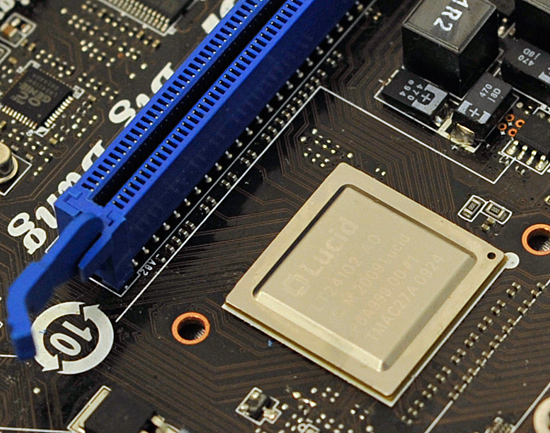
At least on paper, Lucid's technology has the potential to completely eliminate all of the multi-GPU silliness we've been dealing with for the past several years. Today, Lucid is announcing the final set of hardware that will be shipping within the next ~30 days.
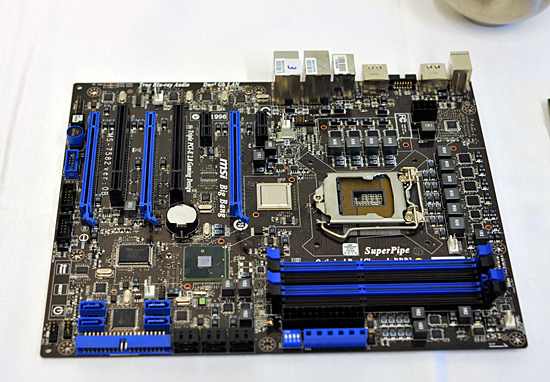
The MSI Big Bang, a P55 motherboard with Lucid's Hydra 200
It's called the Hydra 200 and it will first be featured on MSI's Big Bang P55 motherboard. Unlike the Hydra 100 we talked about last year, 200 is built on a 65nm process node instead of 130nm. The architecture is widely improved thanks to much more experience with the chip on Lucid's part.
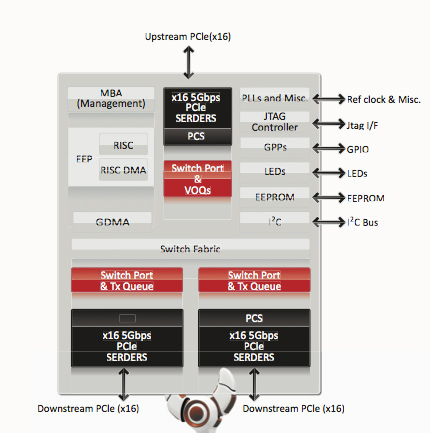
There are three versions of the Hydra 200: the LT22114, the LT22102 and the LT22114. The only difference between the chips are the number of PCIe lanes. The lowest end chip has a x8 connection to the CPU/PCIe controller and two x8 connections to GPUs. The midrange LT22102 has a x16 connection to the CPU and two x16 connections for GPUs. And the highest end solution, the one being used on the MSI board, has a x16 to the CPU and then a configurable pair of x16s to GPUs. You can operate this controller in 4 x8 mode, 1 x16 + 2 x8 or 2 x16. It's all auto sensing and auto-configurable. The high end product will be launching in October, with the other two versions shipping into mainstream and potentially mobile systems some time later.

Lucid wouldn't tell us the added cost on a motherboard but Lucid gave us the guidance of around $1.50 per PCIe lane. The high end chip has 48 total PCIe lanes, which puts the premium at $72. The low end chip has 24 lanes, translating into a $36 cost for the Hydra 200 chip. Note that since the Hydra 200 has an integrated PCIe switch, there's no need for extra chips on the motherboard (and of course no SLI licensing fees). The first implementation of the Hydra 200 will be on MSI's high end P55 motherboard, so we can expect prices to be at the upper end of the spectrum. With enough support, we could see that fall into the upper mainstream segment.
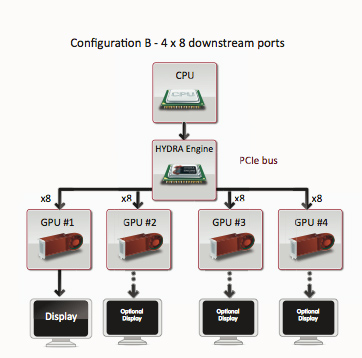
Lucid specs the Hydra 200 at a 6W TDP.
Also unlike last year, we actually got real seat time with the Hydra 200 and MSI's Big Bang. Even better: we got to play on a GeForce GTX 260 + ATI Radeon HD 4890 running in multi-GPU mode.
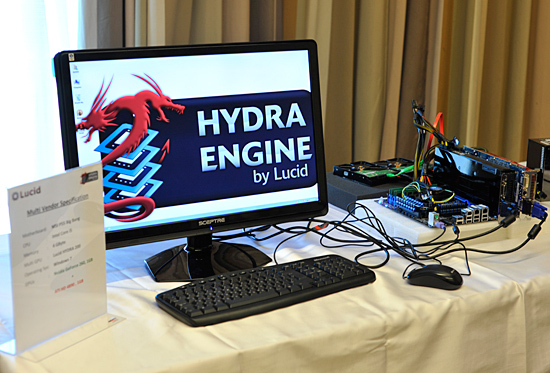
Of course with two different GPU vendors, we need Windows 7 to allow both drivers to work at the same time. Lucid's software runs in the background and lets you enable/disable multi-GPU mode:

If for any reason Lucid can't run a game in multi-GPU mode, it will always fall back to working on a single GPU without any interaction from the end user. Lucid claims to be able to accelerate all DX9 and DX10 games, although things like AA become easier in DX10 since all hardware should resolve the same way.
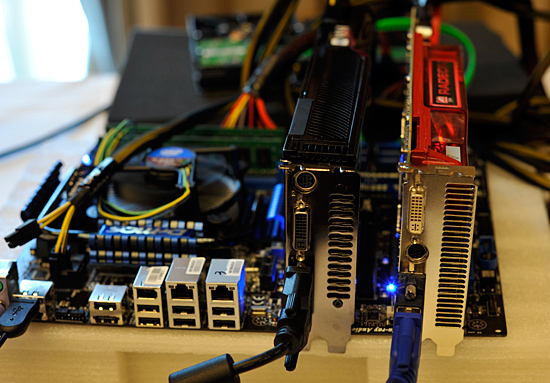
NVIDIA and ATI running in multi-GPU mode on a single system

There are a lot of questions about performance and compatibility, but honestly we can't say much on that until we get the hardware ourselves. We were given some time to play with the system and can say that it at least works.
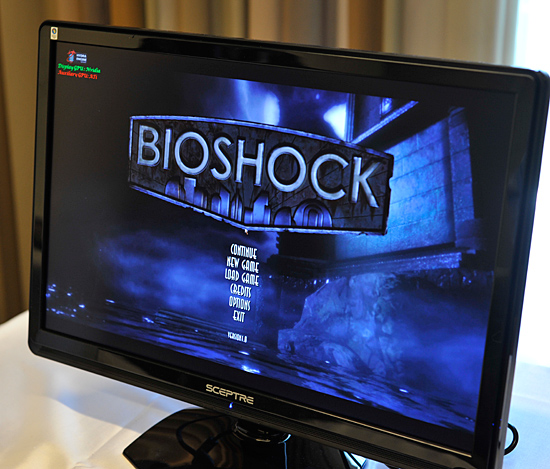
Lucid only had two games installed on the cross-vendor GPU setup: Bioshock and FEAR 2. There are apparently more demos at the show floor, we'll try and bring more impressions from IDF later this week.










94 Comments
View All Comments
Ratinator - Friday, September 25, 2009 - link
Last time I checked speeds didn't triple every year which is about how often I would get a new card.donjuancarlos - Wednesday, September 23, 2009 - link
I don't know about that. I have an 8800GT that I am planning to upgrade to a DX11 card when they come out. I would have never considered an SLI setup using an older card, but with this, I would.faxon - Wednesday, September 23, 2009 - link
lol not mine. i just ordered an HD58701GB. with that said, if it isnt up to par, i wont have any issues just getting GT300 as well when it comes out and throwing it on there if it works properly lmao. i was originally planning on getting a second card in a month anyway but that perfectly coincides with the expected launch of the big bang, so i will know whether to spend my cash there instead or not, since i was gonna get an i7 after anyway to replace my EP45-UD3Pfaxon - Wednesday, September 23, 2009 - link
ooh also, how are single card multigpu solutions handled? they run SLI/CF on the card so wouldnt that pose some interesting issues? or could ATI/NV just use this instead of whatever silicon they are using now to bridge the cards? the low end model would be well suited to what they need to do for a fair bit cheaper and it would also solve the scaling issues some of these cards can have as well in some games lol